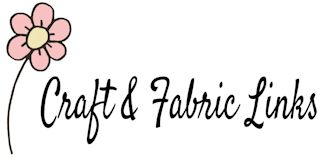|
|
| HOME SEW CRAFTS SHOP |
|
BUSINESS BOOK
Create Your Way To Success |
| lessons craft patterns sewing patterns |
Chapter 2
|
|
Index & Table of Contents
Please read our Disclaimer and Terms Of Use before reading this book. |
What Business Structure Is Best For You?You, along with your CPA and attorney, must decide what legal form you want your business to take. Be sure you understand the advantages and disadvantages of each different type, so you can make the correct choice. I will cover three basic forms your business can take. There are others, and variations of these as well. Legal, as well as tax consequences must be considered. Seek advice from a CPA and lawyer. Sole ProprietorshipThis means that you and your business are legally one and the same. In other words, you are personally responsible for your business. This includes debts and liabilities. If the business cannot pay a bill, you must pay it with your own funds. This is perhaps the main disadvantage of this form of business. If you are forming a business which has potential for liability, this would not be a good choice of business structure. A sole proprietor can deduct a portion of medical insurance costs, but since he or she is not an employee, the sole proprietor cannot benefit from all of the same employee write offs that a corporation can. There are many advantages to this form of business. You have total control over your business, and you are not an employee, so (unless you employ others) you are free from filing employee tax returns, plus you are free to make draws (remove funds) from the business. This is not true for a corporation. Funds drawn from a corporation must taken through payroll or a loan, which must be paid baci with interest. There may be a tax advantage to being a sole proprietor depending on your individual tax bracket and other circumstances. You will pay personal income tax on the profit of the business, whether you pay yourself funds or not. For example, if the business has a net profit of $10,000, your income tax is paid based on that $10,000 - even if you left all the earnings in the company bank account and didn't "pay yourself" anything - more on this in a later chapter. Schedule C of the 1040 form is used to report your business profit or loss. NOTE: In the example above, your income tax is based on the full $10,000 the business earned. This is your pay, whether you take it all in draws or not. You may take $5,000 or $20,000 in draws that year - your income tax is still based on the $10,000 net profit of the business. Your gross pay as far as computing income tax goes is always based on the net profit of the company. PartnershipThis means you share the business with someone else. In many ways you are like two sole proprietors who have joined. The partnership is governed by the Partnership Agreement. This agreement is extremely important because it outlines the duties and responsibilities of partners, covers what happens in the event of a partner's death, etc. You, as a partner, are not an employee. You can make draws as in a sole proprietorship, and you, as a partner, have control over the management of the partnership (within guidelines of the partnership agreement). As with the sole proprietorship, you face liability regarding the business debts (limited partners and limited partnerships are more protected). Creditors may even come after business assets to satisfy personal debts of a partner. You also are not employees, so do not qualify for the tax benefits regarding employees listed above under Sole Proprietorships. Also, the partnership does not automatically continue in the event of a death of a partner (a partnership generally is dissolved, and a corporation will continue). Other forms of partnership include Limited Partnership (the limited partner is an investor who is not actively involved in the business, but merely provides funds) and the Limited Liability Partnership. If you enter into a partnership - be sure you have a good partnership agreement. CorporationA corporation is legally a separate entity from the owner. That means the liability is limited (although this is no longer quite the guarantee it once was). The corporation pays its own income tax. The owner is paid through payroll or dividends and pays his or her own income taxes. The owner cannot take "draws". Removing money must be in the form of payroll or a loan (which must be paid back at a reasonable interest rate). There may be tax advantages to incorporating, depending on the individual's tax bracket. Most businesses with high liability (home builders, for example) will incorporate. Other businesses tend to incorporate when they reach a certain level of sales. Your CPA can provide more information on this. Tax laws change constantly, so I cannot be more specific in this document. I am not a lawyer or tax specialist. To decide which form of business is best for you, discuss your needs with your lawyer and CPA. Guidance from these professionals is highly recommended in the formation of your business. Money spent for expertise up front can be a huge savings to you later. These professionals are best equipped to answer your questions and provide recommendations. |
| Index & Table of Contents Chapter 1 Chapter 2 Chapter 3 Chapter 4 Chapter 5 Chapter 6 Chapter 7 Chapter 8 Resource Links |
Visit our store! |
Free Videos |
Please ShareI rely on advertising to keep my site free. Please share with friends. |
Privacy Policy & Terms Of UseBy using our website, you expressly consent to our Privacy Policy and Terms & Conditions. All Patterns, images and instructions are copyright protected. |



